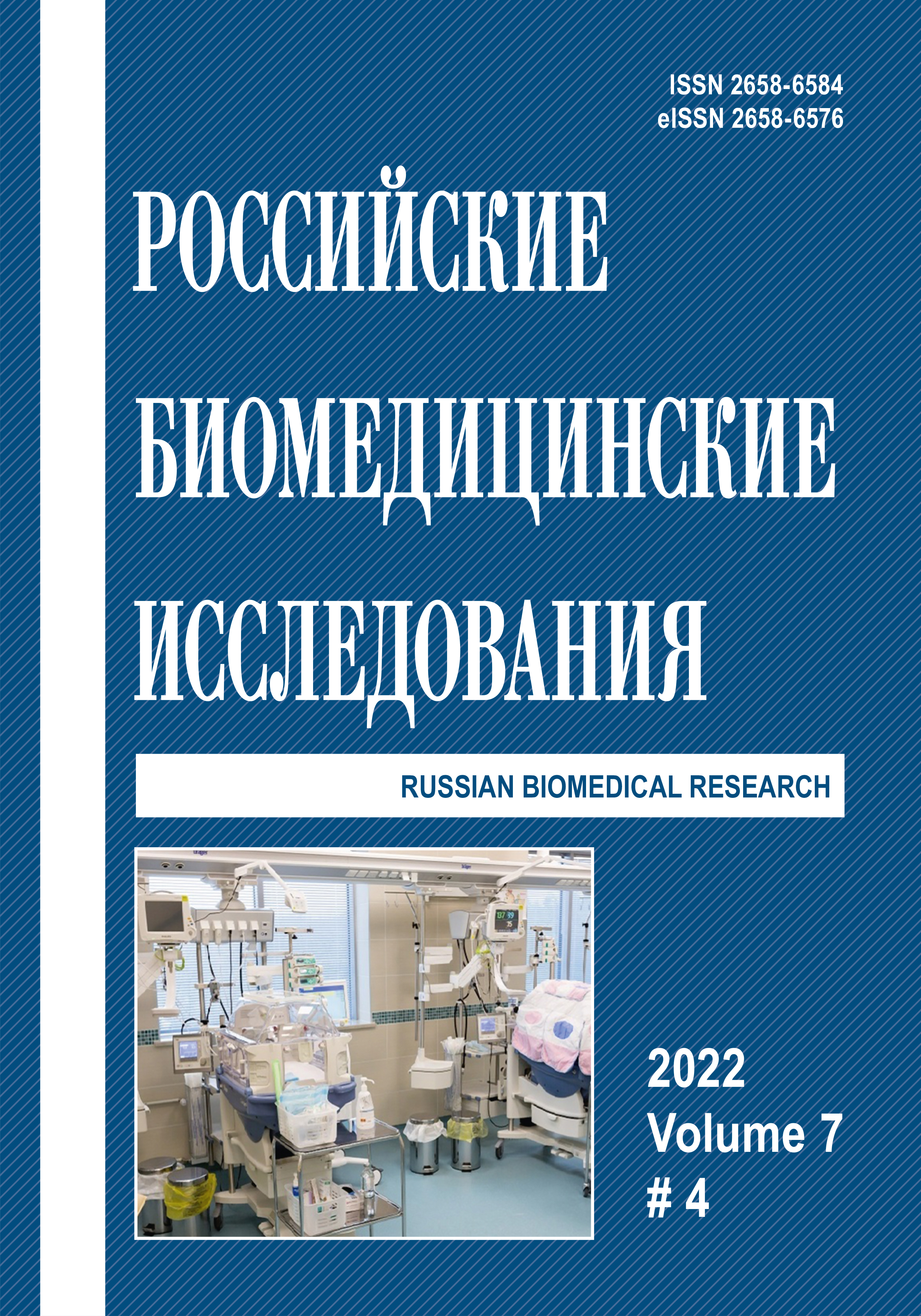THE RELATIONSHIP BETWEEN THE CONTENT OF FATTY ACIDS IN THE BLOOD AND PLATELET COUNT IN NEONATAL SEPSIS
Abstract
Purpose of the study. To identify the relationship of platelet count with levels of fatty acids in the blood of patients with neonatal sepsis. Materials and methods. The fatty acid content (FA) was analyzed using the tandem mass spectrometry method on a Quattro micro MSMS analytical instrument (Perkin Elmer, Finland). Inclusion criteria: group 1 - newborns, the presence of an infectious and inflammatory focus and dysfunction of two or more systems (sepsis); group 2 - newborns with pneumonia, the presence of an infectious inflammatory focus in the lungs and the absence of organ and systems dysfunction requiring intensive care. Exclusion criteria: ulcerative necrotic enterocolitis, congenital malformations requiring surgical correction. Results. In group 1 the serum levels of fatty acids (FA) were statistically significantly increased: C4, C10, C12, C16:1, C18:1. Statistically significantly reduced - C6, C8, C14, C10:1, C12:1. The number of blood platelets moderately positively correlated with FA C8, C18:1, C18:2 and closely positively correlated with FA 8:1. The number of blood platelets made it possible to predict the development of negative clinical outcome: the area under the ROC curve (AUC) was 0.89, the sensitivity was 67%, and the specificity was 89%. Conclusion. The number of blood platelets is a prognostic indicator in neonatal sepsis, which can also reflect the depth of fatty acid metabolism disorders.



